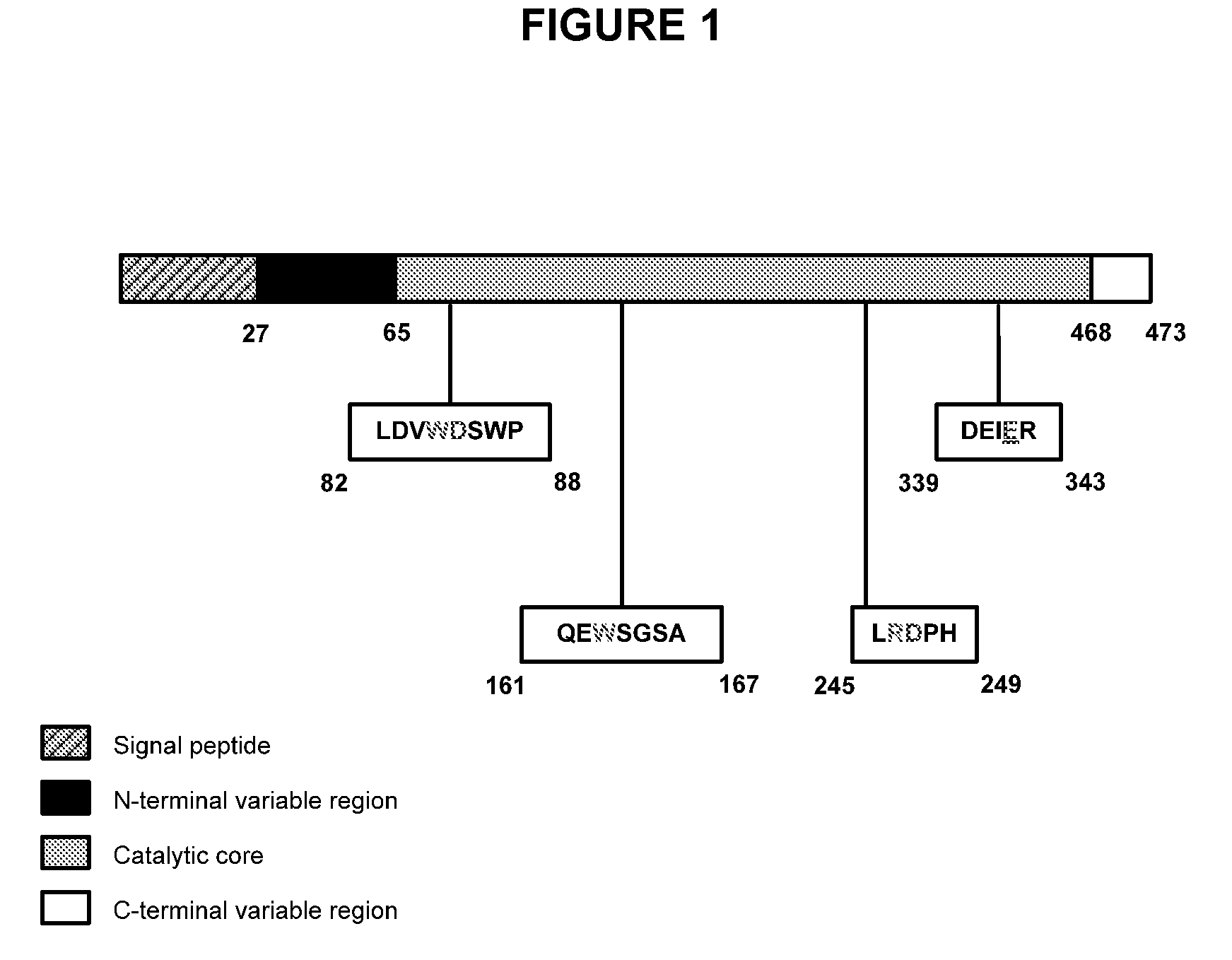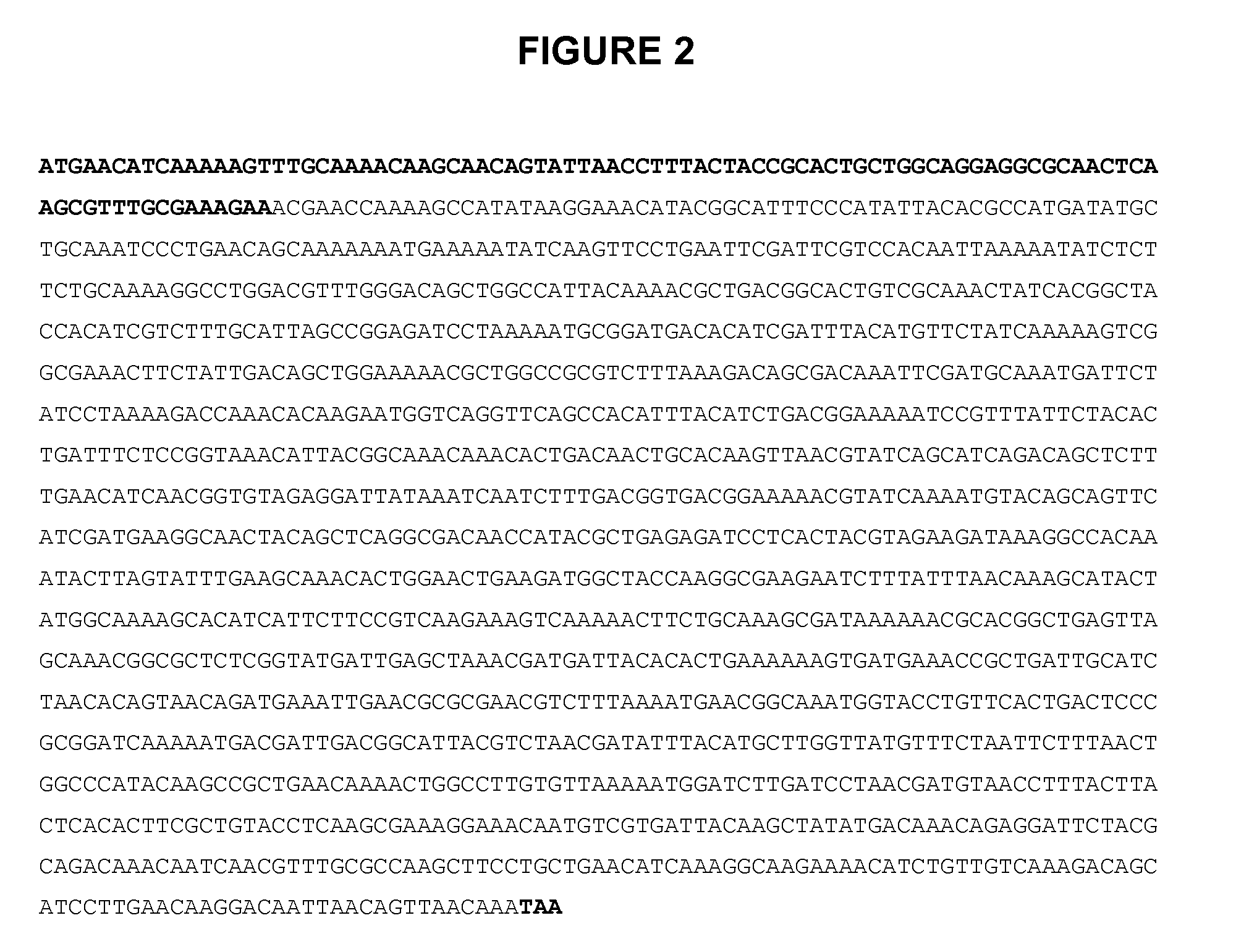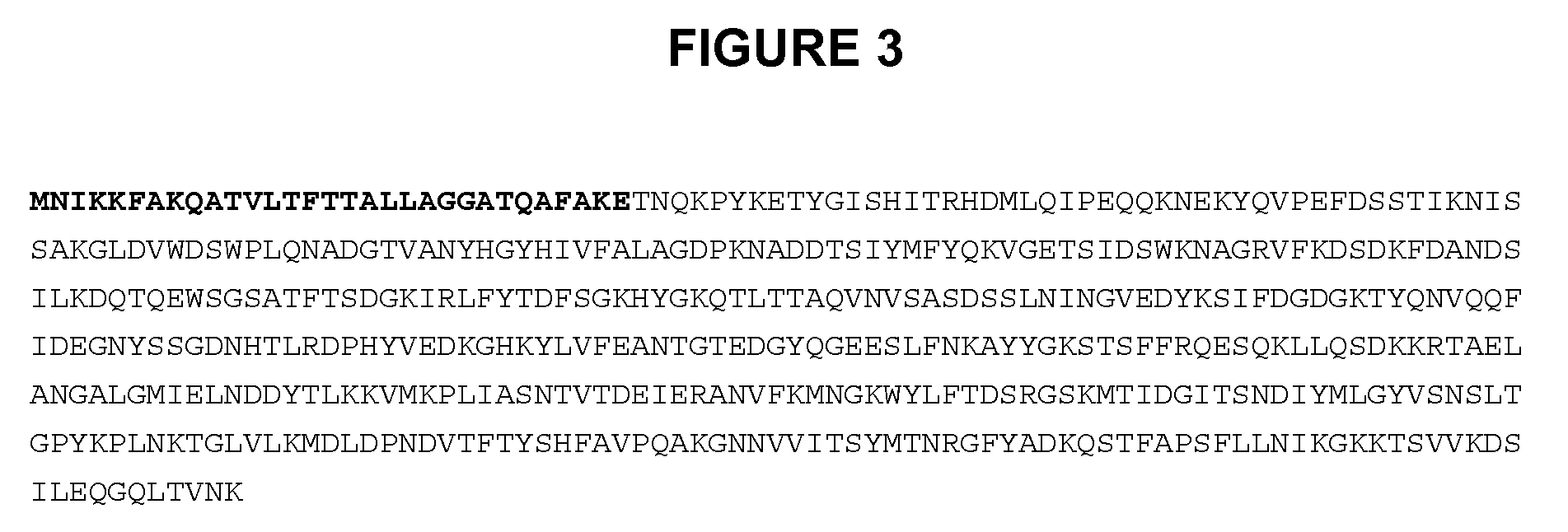Plant Technology
a technology of fructan and plant, applied in the field of plant technology, can solve the problems of difficult manipulation of biochemical pathways by manipulating the activity of enzymes in the pathways, and achieve the effects of increasing plant biomass, facilitating access to nutrition, and enhancing nutritional valu
- Summary
- Abstract
- Description
- Claims
- Application Information
AI Technical Summary
Benefits of technology
Problems solved by technology
Method used
Image
Examples
example 1
Isolation of Bacterial Fructan Biosynthesis Genes
[0177]FIG. 1 presents a schematic representation of SacB protein from Bacillus subtilis. The four different regions shown are: N-terminal signal sequence; N-terminal variable region; catalytic core; and C-terminal variable region. Structurally, most of the bacterial inulosucrases and levansucrases share the N-terminal signal peptide, a catalytic triad. This sequence is removed during the sequence modification. The residues involved in sucrose binding are located inside the catalytic core sequences and remain untouched during the modification.
[0178]The bacterial levansucrase (SacB) and inulosucrase (Lsc) nucleotide and protein sequences are provided in FIGS. 2-5, respectively. However, for transformation into plants the bacterial levansucrase and inulosucrase sequences are also modified in the following manner:[0179]Removal of the bacterial N-signal peptide;[0180]Adaptation of codon usage, including the start of translation for monocot...
example 2
Modification of Bacterial Fructan Biosynthesis Genes
Targeting of Bacterial Ft Genes to Specific Cellular Compartments
[0184]To direct the bacterial FT genes away from the cytosol and to compartment where both sucrose and fructan accumulate the coding sequences of SacB and Lsc are modified with a putative vacuolar targeting sequence from the preprosporamin protein (SPOR531) of sweet potato (Ipomoea batatas). The propeptide of a precursor to sporamin is required for targeting of sporamin to the vacuole (Hattori et al., 1985). The vacuolar targeting information of sporamin is encoded in an amino-terminal propeptide and is indicated in FIGS. 5 and 6.
[0185]Sequence modification involves the removal of the N-signal peptide from both the SacB and Lsc bacterial fuctan biosynthesis genes and the addition of SPOR531 vacuolar targeting signal (FIGS. 7-8 and 10-11, respectively).
[0186]Prediction of subcellular localisation and topology of the modified proteins using the Secondary Structure Predi...
example 3
Generating Vectors for Stable Transformation in Dicots
Synthesis of Expression Constructs
[0189]Expression constructs utlising photosyntheic promoters, the modified bacterial fructan biosynthesis genes indicated in Example 2 and the NOS terminator sequence for transformation into dicot plants is artificially synthesised.
[0190]The use of a photosynthetic promoter expresses the genes in tissues that accumulate fructans, while the modified sequences target the protein to specific plant cell compartments.
[0191]The Ribulose-1,5-bisphosphate carboxylase / oxygenase Small subunit (RbcS) is a well-characterised light-regulated gene in higher plants. A 1700 by fragment of the Arabidopsis thaliana Ribulose-1,5-bisphosphate carboxylase / oxygenase Small subunit (AtRbcS) promoter sequence has previously been cloned. Primers are designed to amplify a smaller fragment containing the TATA signal from the AtRbcS promoter for use in expression vectors.
[0192]The newly predicted sequences for the modified b...
PUM
| Property | Measurement | Unit |
|---|---|---|
| soluble carbohydrate | aaaaa | aaaaa |
| yield stability | aaaaa | aaaaa |
| water-soluble | aaaaa | aaaaa |
Abstract
Description
Claims
Application Information
 Login to View More
Login to View More - R&D
- Intellectual Property
- Life Sciences
- Materials
- Tech Scout
- Unparalleled Data Quality
- Higher Quality Content
- 60% Fewer Hallucinations
Browse by: Latest US Patents, China's latest patents, Technical Efficacy Thesaurus, Application Domain, Technology Topic, Popular Technical Reports.
© 2025 PatSnap. All rights reserved.Legal|Privacy policy|Modern Slavery Act Transparency Statement|Sitemap|About US| Contact US: help@patsnap.com



